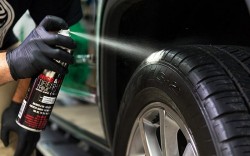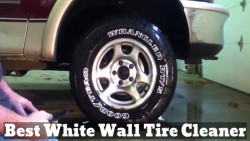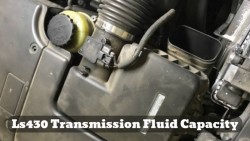How fast does drifting wear out regular car tires?
If you are a racer or you love to watch regular racing or F1 games, then you should be familiar with a technique called drifting. Drifting is caused by the oversteer of a car which occurs when the back tires of your car lose grip causing the rear end of the car to step out while accelerating.
People often wonder, “how fast does drifting wear out regular car tires?” Because as awesome as this technique is, it takes a toll on the well-being of your car if it is not designed for this purpose. This article explains how drifting affects your car tires and how quickly it causes damage.
Why do people drift
There are a lot of downsides to drifting, but people still do it. Why? Here are two common reasons why people drift their cars.
- The excitement: Track racers understand the thrill of drifting and the satisfaction that comes with getting the drift right and having a crowd cheering them on.
- Maintain RPM: With drifting, you don't have to slow down your car when you near a corner instead, you can just take the turn at once and after taking any corner, you still get to maintain a great car position.
How drifting damage car tires
The tires of sporting cars or F1 cars are designed for continuous drifting and other extreme techniques, hence they are not easily affected or damaged after several drifts. F1 tires are made with rubber (natural and synthetic) and some artificial fibers. They can tolerate extreme force and pressure under wet and dry conditions, and experts test them properly before use. With their taller and wider physical appearance, these tires are more suited for drifting.
The tires of a regular car are made of nylon and several other materials. Unlike F1 tires, these tires are not well-made for extreme activities like drifting.
Continuous drifting with the presence of heat and friction will make the tires of your car gradually wear away causing them to become smaller and weaker. This action affects the rear tires the most because they are spun with great force against the tracks.
How fast does drifting wear out regular car tires?
If you are interested in drift racing and you are asking, how fast does drifting wear out regular car tires? You should know that the period at which your tires wear as a result of drifting depends on several factors like the type of tires being used, the frequency of drift activities, and the drifting surface.
.jpg)
Type of tire
There are 3 primary types of tires for regular cars. All-season, summer, and winter tires. As its name implies, all-seasoned tires are suitable for use all through the year. They can achieve this because they are designed with thread-like patterns for good grip and they are made of important rubber components that make them suitable for use in hot and cold temperatures. The ultra-high performance gives a better grip and does not wear easily as the regular all-seasoned tires.
Summer tires are designed to be used in hot and dry climates including rainy periods. Summer tires are known to have overall high performance and can be used for more vigorous driving activities. Winter tires are primarily for movement with the presence of snow around, they are designed with thread patterns as well, except their patterns are larger to give them better traction on snow.
While some of these types of tires are stronger than others, it is important to know that they all still wear out pretty fast. The only difference is that the weaker types will wear much faster than the stronger ones. By comparison, summer tires are stronger than the others so it should take a while before they beings to wear.
Drifting frequency
Among other factors, how often you drift also determined the speed at which your tires wear off. Skidding once in a while is harmless to your tires and will not cause wear, but drifting often in mi ni-races or while driving will increase the wear speed of your tires.
Drifting during a long-distance trip also causes quick wearing and this can be observed in motorsports and F1 races. Because of the high racing speed, even with an advanced tire design, racers are required to change their tires every round for better traction and safety.
Drift surface
Some surfaces quicken wear compared to others. Drifting on ice causes less damage when compared to drifting on mud and gravel. Constant drifting on rough surfaces wears out your car tires faster than the same amount of drifting on a smooth surface, and this happens because the threads provide your vehicle with traction.
Effects of drifting on your car
The negative effects of drifting extend beyond the tires of your car to several parts as well, and they include both external and internal damages.
External damages
Some tracks may have a barrier or fences. Careless drifting in this situation can lead to your car colliding with this barrier. Your windows, front, and rear bumpers are common external parts that can be affected by drifting. In a serious collision, your windscreen may be involved as well, and replacing these parts will cost a lot of money.
Internal damage
Prominent internal parts like your engine and transmission system which are responsible for combustion and power transmission respectively can be affected by drifting. These parts undergo a lot of strain while turning through sharp corners and moving at high speed at the same time.
The clutch is one part of the system that is affected by drifting, when using this technique, clutch kicking is involved and this can put your clutch and clutch plate under pressure thus making it lose its functionality on time.
How to prepare your car for drifting?
There's a lot that can go wrong when drifting with a regular car not modified for this purpose, hence proper preparation should be made before attempting to drift with your car. If you are still persistent about drifting with your car, here are some steps you can take.
Choose suitable tires
As we have explained earlier, drifting wears the threads of your tires after 2-3 sessions. To preserve your tires, you can opt for using inexpensive ones that can be replaced easily compared to the expensive ones you already have on your car. A good option for this is to use OEM tires.
If you plan on drifting often, then cheap tires may not cut as you will be purchasing more than you planned to, instead, you can use tires that are modified for drifting. This is great if you are also seeking the real experience of drifting, however, even as these types of tires are stronger than regular ones, they still wear out pretty fast.
You should have a set of tires with fitted rims to make changing them easier.
Remove loose items
Drifting involves a high speed and a sudden turn, and the loose item can serve as a distraction which can lead to an accident. Before you get your car on the track, rid your car of loose items like your personal stuff (bags, cups, and water bottles) and storage items lying on the floor of your car. Loose items on the floor of your car could roll to the pedals and cause a dangerous obstruction.
Tools
If you are in for a lot of drifting sessions, you should have the necessary tools for changing out the tires after the initial one is worn out. Some tools you can carry out with you are a jack, wrench, and wheel chock.
Protective gear
Drifting can be messy if mistakes are made, hence you should be equipped with your protective gear. A racing helmet is important to protect you during any potential collision. You should also ensure you have a functioning seatbelt to keep you strapped to your seat while racing.
Heat shields
A lot of heat is involved during drifting and it applies not only to the tires but to the engine as well. When the engine begins to overheat, it may dry up the important fluids which can cause severe damage to your car. Installing a heat shield will help prevent this from happening.
Use good coil overs

Coil overs are equipment installed that acts just like shock absorbers. They prevent your car from getting too close to the ground, and it is important for drifting. Check your coil overs before drifting and ensure they are all right and not compressed.
Further advanced modifications
If you want to up your drifting experience, then you can further modify other parts of your car to come close to the standards of drifting cars. This includes Removing any unnecessary weight from your car like the rear seats, this will help especially if your car weighs a lot. You can also install a heavy-duty clutch, hydraulic handbrakes, and increasing steering angle for a better experience.
Conclusion
If you keep asking, “how fast does drifting wear out regular car tires?” Then this article should have explained how fast your tires get damaged with this technique and how this happens. Your tires should wear out after 2-3 sessions of drifting and this can be as a result of the type of tires being used, the drifting surface, and your drifting frequency.
You can prepare your car for drifting by following our tips above and learning about the potential damages that can happen to your car, you can be more careful while drifting.



